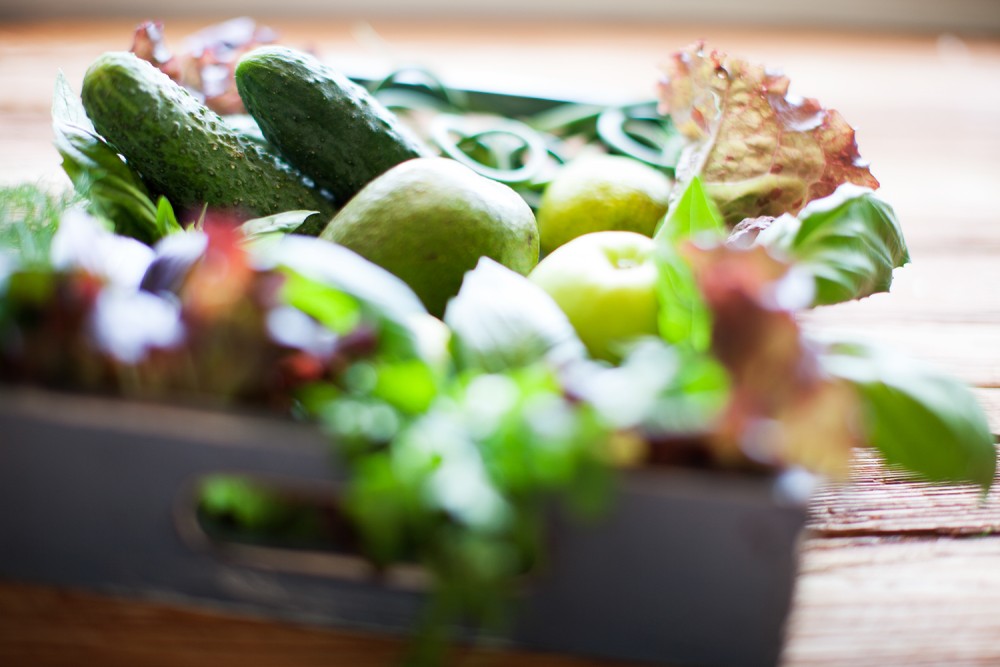Vegetables that are fearfully and wonderfully made
My friend left me his CSA share for two weeks. It changed the way I look at labor.

(Photo: Olga Simankova / iStock / Getty)
This summer, a friend went on vacation for two weeks and left me his CSA shares. A CSA—it stands for “community supported agriculture”—lets you pay a local farm at the beginning of a season for a share of their bounty as it arrives—typically a box or so of fresh produce each week, often fresher and stranger than what you can get in the grocery store. (When was the last time your local Kroger carried kohlrabi, or even an old-timey staple like shelling peas? I got massive quantities of both in my friend’s box.)
I’m usually an enthusiastic but fairly regimented cook. I look up recipes, make a menu for the week, make an ingredient list, and go to the store for whatever’s missing. I then cook the recipes—I’m confident enough to add my own flourishes and substitutions, but not quite enough to just face down a mountain of ingredients and wing it every night. Rinse, repeat. (To be fair, my husband, as our household’s designated dishwasher, does most of the actual rinsing.)
Read our latest issue or browse back issues.
I knew, from prior experience, that cooking from a CSA pushes you into a bit more improvisation—wilder substitutions, different recipes than the ones on regular rotation. A nudge out of the routine, and in the direction of eating additional vegetables. What could be better?
It turns out my friend is no average CSA subscriber. Each week I picked up about 25 pounds of produce: fava beans, kale, pickling cukes, tomatoes seemingly the size of my head, endless string and runner beans and peas. This was not going to be just a little more improvisation.
And so began my two weeks of frantic cooking to keep up with the mountain of greenery quietly decomposing in my fridge. I grilled, blanched, roasted, pickled, and preserved. I boiled a pint of black currants down into a sticky, wine-dark jam. We ate like kings that week, along with eating some experiments that were, frankly, not quite it.
As I’ve written about previously, I use my own backyard to grow things. This year my chickpeas were eaten entirely by voracious caterpillars, half my tomatoes had blossom-end rot, and each six-foot corn stalk produced a single, four-inch cob. The work that goes into a gorgeous CSA box happens on a scale I don’t know how to properly understand. But something about receiving a carrot that still has dirt clinging to it connects you to that work in a way that a bag of carrots from the grocery store does not.
It also creates more work for me. I had to rinse off the dirt, decide what to do with the peels and carrot tops (a frequent Google search: Can you eat [insert vegetable waste item here]?), and all that before even chopping or prepping in whatever way a recipe called for. But recognizing the labor behind that carrot made wasting any part of it feel like a sin. Scraps were cooked down, added to the broth bag in the freezer, or tossed into the vermicompost bins I keep in the backyard despite my husband’s slight aversion to what I lovingly call my “bucket of worms.” From earth to earth again, nothing disposed of carelessly.
Making my own clothes made me feel the same way about store-bought clothes. I could now, somehow, look at a seam and see the labor that went into it, the human care of hands running a piece of fabric through a sewing machine, and as a result I would spend the time to mend that seam when it ripped. Who am I to discard a scrap of human labor, knowing how my eyes blur after an afternoon of hobbyist sewing?
So much of the way we live alienates us not just from the fruits of our labor but from the fruits of everyone else’s as well.
So much of the way we live today is meant to alienate us not just from the fruits of our labor—I have worked jobs where my entire output for eight hours at a desk daily was a handful of tweets, some Instagram posts, and a few updated spreadsheets—but from the fruits of everyone else’s as well. It’s troubling that in order to make that labor legible to myself, I end up buying clothes that tout themselves as handmade or food that advertises its connection to field and farm—when in reality, factory garments and factory food are just as much the product of unseen human hands as anything else is.
In the last few years, I’ve tried to forge new connections with that labor, tried to respect it by using things to their material end and not just the end of my interest in them. I am, of course, not always successful—several of those less successful CSA experiments ended up doing their own kind of creation in the back of my fridge—but it’s something I think about before I buy food or clothes or anything else.
The Bible tells us that we are fearfully and wonderfully made (Ps. 139:14). I think, in turn, that the works of our hands—the things that clothe us and feed us and give us shelter—are at the very least made wonderful through this contact. Treating them as such, as the product of time and ingenuity and work, is worthwhile, even as it adds to your own work. This is a position of tremendous privilege in some ways—to be alienated from this kind of labor, to be able to afford things like farm-fresh food and handmade clothing to remind myself of it, to have the time and energy to pull out needle and thread or to spend time laboring in the kitchen—but it feels like the kind of privilege that reinvests itself in my home and my community, that cycles back and honors all the work that enables the comforts of our lives.






